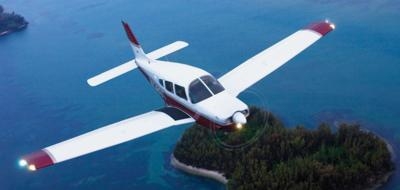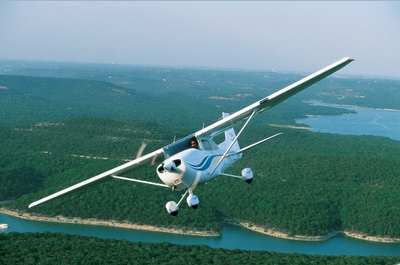Focus Is On Aircraft Performance In Latest Installment Of The FAA's 'Fly Safe' Series
There are many things that can affect aircraft performance: weight, atmospheric conditions, runway environment and the forces acting on an aircraft.

Your Aircraft Flight Manual/Pilot’s Operating Handbook (AFM/POH) contains the operating data for that aircraft. This data, which covers takeoff, climb, range, endurance, descent, and landing is critical for a safe and efficient operation. Some information is available directly, while other performance parameters must be derived through calculations.
You can learn quite a bit about your aircraft – and its capabilities – by studying this performance data. Unfortunately, in the course of accident investigations, we sometimes discover a pilot’s perspective of these performance expectations were unreasonable.
These are two common questions related to aircraft performance. A good way to plan a flight is to decide how much weight you want to haul and to what destination. Start with the crew and passengers. Then add cargo. If these items alone exceed your aircraft’s capability, you’ll either have to make multiple trips, or get a bigger aircraft.
Remember that it matters where you distribute weight on your aircraft. Make sure you’re well within the center of gravity envelope. Too far aft and you’re inviting a stall – too far forward and your aircraft may be difficult or even impossible to flare during landing.
Once you know how much you want to haul, you can figure out how much fuel you can take, and that, together with your weather information, will tell you how far you can go. If you have enough to get to the destination plus alternate and reserve, you’re set. If not, you’ll have to plan an en route fuel stop.

Be sure to consult the AFM/POH for the proper power setting and fuel consumption information at your planned cruising altitude. The winds aloft forecast will give you information from which you can calculate your expected ground speed.
It’s also a good idea to keep an eye on your fuel state during the flight and check en route fuel availability before you launch.
Another important tip on fuel: Don’t wait until you’re close to your destination to refuel. The closer you get, the more you’ll be tempted to continue on your reserve fuel supply.
After you’ve made your weight and balance calculations and adjusted your loading to be within limits, you’ll need to know what sort of performance to expect and, more importantly, what to do if you don’t get it.
You’ll want to consider your departure and arrival airports’ runway lengths, obstructions, and expected density altitude. Are the runways at your destination paved, grass, gravel, or mud? Are they contaminated with snow or water? These factors can affect your takeoff/landing distance and your ability to safely fly with a full load. Use your AFM/POH to help with your performance calculations before you fly.
However, realize that just because the book says the aircraft can do it, doesn’t mean you can do it. Pilot skill and experience count for a lot when you’re trying to duplicate POH performance figures. Be conservative when you calculate your performance and consider adding a safety factor. Some pilots add 50 percent to their takeoff and landing calculations for safety.
Have your AFM/POH handy, and know it well!
One important — and often overlooked — factor in understanding how your aircraft performs is you, the pilot! Let’s face it. The AFM/POH figures and all of your calculations don’t mean much if you can’t duplicate them in your flying. That’s why it’s important to document your performance capability at least yearly with a flight instructor. Fly at a typical mission weight and try to duplicate or simulate mission density altitudes. That way, you’ll know what you and your aircraft can (and can’t) do.
Be sure to also document your achievement in the Wings Proficiency Program. It’s a great way to stay on top of your game and keep you flight review current.
The FAA and the general aviation (GA) community’s national #FlySafe campaign helps educate GA pilots about safety, including Loss of Control (LOC), PowerPlant Failure, and Controlled Flight into Terrain (CFIT).
(Source: FAA. Image from file)
 Aero-News: Quote of the Day (11.02.25)
Aero-News: Quote of the Day (11.02.25) ANN's Daily Aero-Term (11.02.25): Inner-Approach OFZ
ANN's Daily Aero-Term (11.02.25): Inner-Approach OFZ Classic Aero-TV: MultiGP Drone Racing - Aviations New Action Sport
Classic Aero-TV: MultiGP Drone Racing - Aviations New Action Sport ANN's Daily Aero-Term (11.03.25): On-Course Indication
ANN's Daily Aero-Term (11.03.25): On-Course Indication Airborne 10.29.25: X-59 Flies!!!, Kings Aid CFIs, Shutdown Hurts ATC Training
Airborne 10.29.25: X-59 Flies!!!, Kings Aid CFIs, Shutdown Hurts ATC Training




